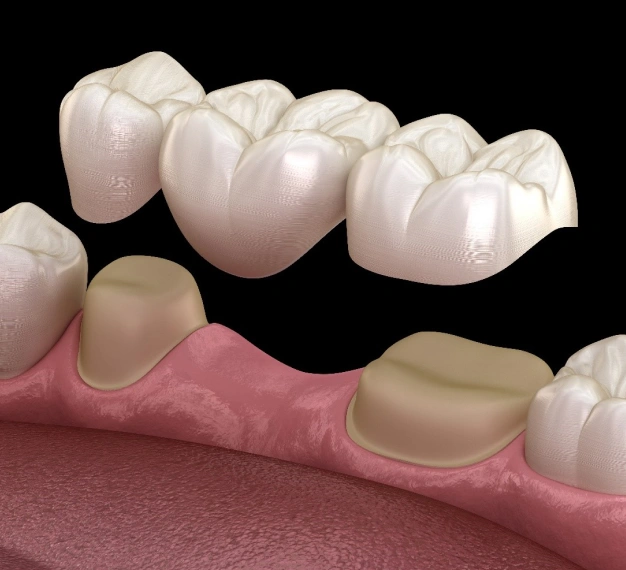4620 East Douglas, Suite 100 Wichita, KS 67208

Understanding Dental Bridges
Dental bridges are most commonly used when a person’s tooth is missing.
If you are missing a tooth, you may consider getting a dental bridge or possibly an implant. Both have their benefits and should be chosen according to individual needs. A dental bridge is secured by placing a crown on both sides of the missing tooth to serve as an anchor for the bridge.
Unlike dentures, bridges are permanently placed and typically are not removed on a regular basis.
A dental bridge is only as strong as the teeth and gum that it is anchored to. It is crucial to keep your existing teeth and gums healthy.
Traditional Bridge
The most common type of dental bridge is a traditional bridge. It consists of a false tooth (pontic) held in place by two crowns that fit over the adjacent teeth. To prepare for the crowns, the dentist files down the surrounding teeth. These crowns, also known as abutments, are then secured using a composite bonding resin.
Cantilever Bridge
A cantilever bridge works like a traditional bridge, but the pontic is supported by only one abutment instead of two. Since it’s anchored on just one side, it’s typically used for teeth at the back of the mouth where less pressure is applied.
Maryland Bridge
The Maryland bridge is another type of dental bridge that secures the pontic using metal or porcelain bands bonded to the back of adjacent teeth, rather than crowns. The key advantage is that it doesn’t require filing down the surrounding teeth. However, it’s less durable than a traditional bridge and may not be ideal for replacing molars, which endure more pressure during chewing.
Procedure Overview
Getting a dental bridge is a more involved process than a routine checkup. If you’ve had a dental crown before, the experience will feel familiar. Placing a bridge typically requires multiple appointments to prepare your teeth and complete the procedure. Any necessary dental work on the supporting teeth, like fillings or root canals, must be done before the bridge can be placed.
- After completing any necessary dental treatments, the dentist will remove a small amount of enamel from the supporting teeth to make space for the abutment crowns.
- A mold of the area will be taken and sent to a dental lab, where your custom bridge will be created. This process typically takes a few weeks.
- While waiting for your permanent bridge, you will be fitted with a temporary bridge to protect the prepared teeth.
- At your final appointment, the permanent bridge will be placed and adjusted to ensure a proper fit and comfortable bite.
The lifespan of your dental bridge depends largely on how well you care for it. With proper maintenance, a bridge can last over 10 years. To maximize its longevity, be sure to brush twice a day, floss daily (including cleaning under the pontic), and visit your dentist regularly for cleanings and checkups.